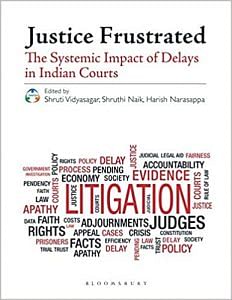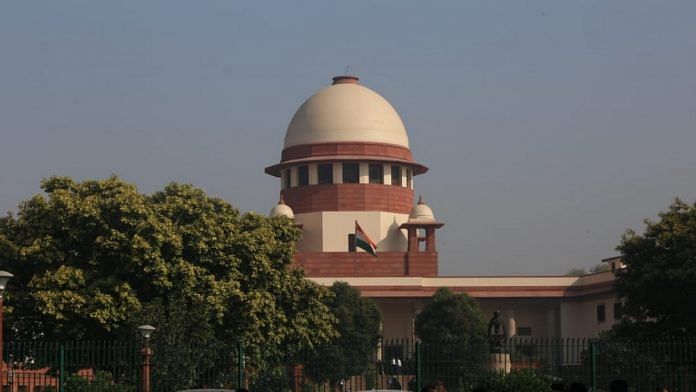Technology has proven its role in enhancing efficiency, improving access, as well as encouraging transparency, accountability, and adherence to timelines in dealing with legal matters. The World Economic Forum 2018 emphasised the role of IT in various fields, including the legal profession, stating that ‘computing has become much cheaper and digital equipment and devices has become widely available, faster and more cheaply available’. Data is the oxygen for machine learning and artificial intelligence. The World Economic Forum 2018 emphasised the need for increased investment in artificial intelligence, research, and cross-border collaboration.
India has taken a variety of measures to automate processes within the judiciary with an aim to improve efficiency and eliminate the time lost in unproductive work. Some of the initiatives are: easy accessibility to online case records and previous judicial pronouncements, reducing dependency on stenographers by utilising voice recognition software, usage of video conferencing facilities to increase the reach of courts, case management systems, e-registry of court, automated preparation of cause-lists, phasing out physical records though e-filing and e-submission of documents, etc.
The initiatives mentioned are proactively implemented to automate processes on the judicial side. However, as the government is considered to be the biggest litigant in India, it is equally important to digitise, automate, and monitor cases from the ministry/department’s side for cases where the government is a litigant. It is for this purpose that the LIMBS was put in place.
LIMBS is a web-based application for monitoring cases involving the central government of India, in a more effective and transparent manner. It is an initiative of the Department of Legal Affairs (DoLA), Ministry of Law and Justice, and aims to digitise the legal process and monitor the entire life cycle of a case. Through a Gazette Notification issued on 8 February 2016 by DoLA, all ministries of the Government of India and their departments, sub- departments, and attached offices were brought under the ambit of LIMBS. It is an innovative and easy-to-access online tool which is available 24×7 to all stakeholders—government officials, department users, nodal officers, higher officials of ministries, advocates, arbitrators, and claimants of 62 ministries. Users can upload latest information regarding a case, and that will be available on a real time basis on a single unified platform to avoid confusion, delay, and financial burden on public exchequer. In a short span of 3.5 years, LIMBS has created a centralised database of 4.07 lakh court cases in which the Union of India is a party, as well as 2,500 arbitration cases.
LIMBS provides a standard GUI screen to capture basic information about court cases and provides an elaborate set of user-friendly reports which allow the higher administration as well as clerks to concurrently monitor the progress of cases. Through its system generated SMS alerts, the higher administration is informed regarding upcoming important cases, contempt cases, Special Leave Petitions, appeals, etc. The system also sends SMSs to users, concerned officers, and advocates regarding forthcoming cases, seven days prior to the hearing in court; this helps the administration remain aware of upcoming case hearings, and ensures that no case remains unnoticed or unprepared for. LIMBS also has a Unique Digital Locker (UDL) and e-document vault which allows users to upload documents that can act as institutional memories. LIMBS also provides a one-page summary report and graphs that have resulted in a perceptible improvement in the working of legal processes in ministries. Thus, through LIMBS, pending court cases are being closely monitored by higher administration of the concerned ministries, the NITI Aayog, DoLA, etc. Further, more than 16,000 advocates are registered with LIMBS, this helps in uploading first-hand information on the system as well as facilitates the timely processing of advocate bills.
LIMBS has a structured database where all relevant information about a case, since its inception, can be found. This includes information regarding the drafting of pleadings, preparation of internal notes and advice by the legal department, filing of a case in court, capturing each proceeding in the court, the final judgment copy, etc. A compilation of over 60 attributes regarding each case facilitates the analysis of cases. LIMBS assists the administration in having a data-driven approach to decision making based on trustworthy, meaningful, authoritative, and precise data.
The following features of LIMBS illustrate the focused approach it has in trying to reduce pendency.
Also read: Start-ups and AI can rescue choked Indian courts
Clubbing of cases
It has often been suggested that cases of a similar nature be clubbed so that they can be dealt with as a combined case. If cases were being monitored manually, information regarding the cases would be scattered and it would, therefore, be time consuming and difficult to combine cases of a similar nature. However, with the implementation of LIMBS, these adversities have been blown-away electronically; as LIMBS is a structured database, the utilisation of artificial intelligence and standard algorithms can help with clubbing cases of a similar nature. This will allow ministries to prepare a combined reply to these cases, and they can be contested in the court as a single/clubbed case. Such clubbing of cases will help decrease the amount of time and effort that the court, as well as the administration, would have to put in. Thus, LIMBS can play an influential role in reducing at least 20 per cent of central government related litigation by enabling the clubbing of similar cases.
Also read: From virtual benches to entry curbs — how SC and Delhi HC will work after lockdown
Harmonisation of policy
LIMBS has a structured database which can prompt policymakers and researchers to ascertain strained areas where there is a high volume of litigation arising due to ambiguity in policies. It can become a catalyst to improving policies by simplifying, streamlining, and harmonising them with an aim to eliminate unnecessary litigation. The elimination of ambiguities with the help of LIMBS can further the cause of ease of doing business, and therefore become instrumental for good governance.
Use of real-time analytics
Prior to LIMBS, information regarding cases of the central government was dispersed, and it was hence difficult to assimilate the right information at the right time. Through the use of LIMBS, this situation has been dealt with and analytical tools are able to provide precise information when required. LIMBS provides dashboards, graphs, summarised reports, and detailed data sheets which cater to the needs of government officials. Cognitive technologies, artificial intelligence, and machine learning can also help the administration take action effectively. LIMBS allows stakeholders to monitor cases on real time basis and is a promising step to check the increasing pendency.
Also read: 120 judge proposals are stuck as SC collegium hasn’t met for over 2 months due to lockdown
Predictive and perspective analysis
Dashboards and graphical representations are in-built in the LIMBS application for in-depth analysis of cases. However, the higher administration contemplates more use of the data. The idea of ‘smart data discovery’ is being preferred, wherein smart analytical tools help identify trends in the data. The benefit of this approach is that it is less subjective or biased to human interpretation, when compared with traditional analytics. LIMBS at a self-actualisation stage, can help with predictive analyses. For example, while filing a case in court, when a user selects the name of the court, the system will be able to provide information regarding the approximate time it will take the court to dispose the case, based on past trends. While selecting the advocate, the system can provide information regarding the percentage of cases that the advocate won, as per past records.
Further, through machine learning, the system can provide a list of previous judgments and replies submitted in similar cases that were dealt with in the past. Bibek Debroy had once said ‘on all civil cases, not just Union government ones, the moment issues are framed, one more or less (in 90 per cent of cases) knows the eventual outcome, within a band, not precisely. Litigation merely prolongs the journey towards a certain outcome’.7 As LIMBS provides all the required relevant information, it can help users predict the chances of winning a case. It can, therefore, act as a catalyst in helping the administration avoid unnecessary litigation and become a tool to reduce the burden of the judiciary.
Also read: Corona is a wake up call for Indian courts. They aren’t equipped to function in a crisis
Mining of text
Text mining based on deep learning algorithms is a method to categorise text from unstructured data into structured data. Text mining allows the computer to read documents which are spread over several pages and accessible in .pdf, .doc, and excel formats. It helps categorise the text with dynamic indexes, allows users to retrieve the same at a faster pace, and can prepare a synopsis by analysing the text. LIMBS is a rich source of information as it contains uploaded documents such as replies, counter replies, affidavits, contempt notices, judgments, etc. Text mining of these documents will allow the users to access relevant information in the shortest possible time with a high accuracy. Machine learning may further refine accessible data and assist the administration in making a faster reply. The introduction of objectivity in the system will help the administration quickly identify the next steps to be taken to curb pendency.

This excerpt is from ‘Justice Frustrated: The Systemic Impact of Delays in Indian Courts’, and has been published with permission from Bloomsbury India.






